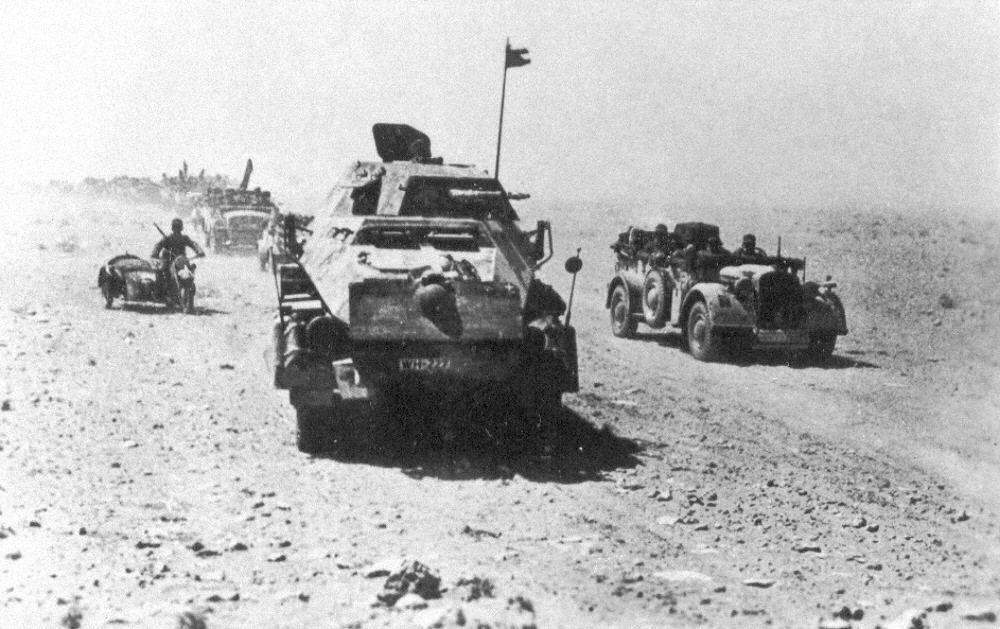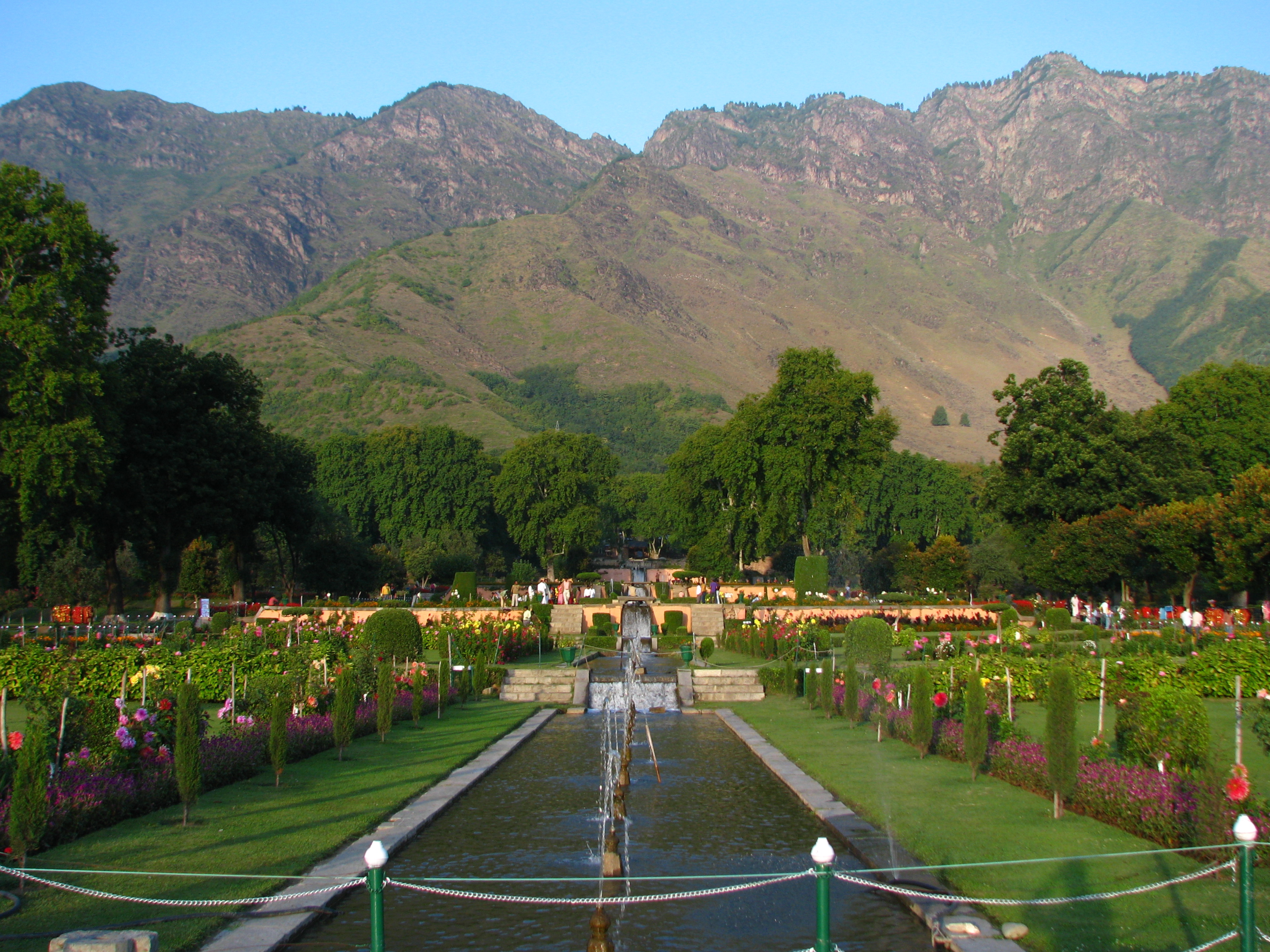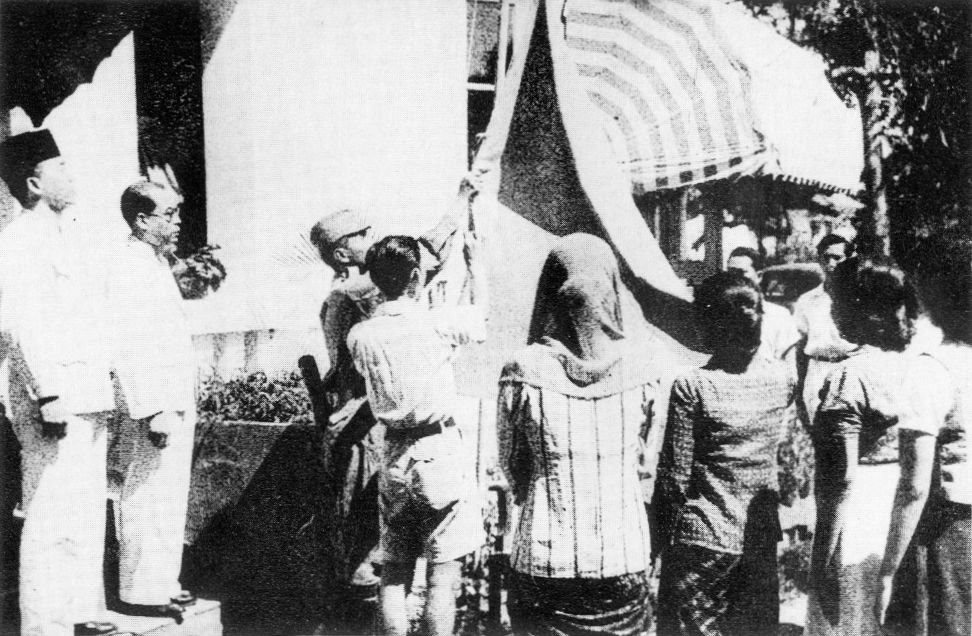|
161st Indian Infantry Brigade
The 161st Indian Infantry Brigade was an infantry brigade formation of the Indian Army during World War II. As part of the arrangements for the independence and partition of British India the brigade was allocated to India and became the 161st Infantry Brigade in the army of the newly independent India. History The brigade was formed in late November 1941 from the reformed British 161st Infantry Brigade which had been assigned to the 5th Indian Infantry Division earlier in the month. The brigade was then sent to garrison Cyprus in case of a German invasion. In April 1942, it moved to Egypt to take part in the Western Desert Campaign having been re organised as a motor brigade. Attached to the British 10th Armoured Division for the First Battle of El Alamein between June and July 1942, the brigade returned to the 5th Division for action in Burma. In Burma it was attached successively to a number of divisions: British 2nd Infantry Division The 2nd Infantry Division was an in ... [...More Info...] [...Related Items...] OR: [Wikipedia] [Google] [Baidu] |
Infantry
Infantry, or infantryman are a type of soldier who specialize in ground combat, typically fighting dismounted. Historically the term was used to describe foot soldiers, i.e. those who march and fight on foot. In modern usage, the term broadly encompasses a wide variety of subspecialties, including light infantry, irregular infantry, heavy infantry, mountain infantry, motorized infantry, mechanized infantry, Airborne forces, airborne infantry, Air assault, air assault infantry, and Marines, naval infantry. Other subtypes of infantry, such as line infantry and mounted infantry, were once commonplace but fell out of favor in the 1800s with the invention of more accurate and powerful weapons. Etymology and terminology In English, use of the term ''infantry'' began about the 1570s, describing soldiers who march and fight on foot. The word derives from Middle French , from older Italian (also Spanish) ''infanteria'' (foot soldiers too inexperienced for cavalry), from Latin '' ... [...More Info...] [...Related Items...] OR: [Wikipedia] [Google] [Baidu] |
First Battle Of El Alamein
The First Battle of El Alamein (1–27 July 1942) was a battle of the Western Desert campaign of World War II, fought in Egypt between Axis (German and Italian) forces of the Panzer Army Africa—which included the under Field Marshal Erwin Rommel—and Allied (British Empire and Commonwealth) forces of the Eighth Army under General Claude Auchinleck. In this battle the British halted a second advance by the Axis forces into Egypt. Axis positions near El Alamein, only from Alexandria, were dangerously close to the ports and cities of Egypt, the base facilities of the Commonwealth forces and the Suez Canal. However, the Axis forces were too far from their base at Tripoli in Libya to remain at El Alamein indefinitely, which led both sides to accumulate supplies for more offensives, against the constraints of time and distance. Background Retreat from Gazala After their defeat at the Battle of Gazala in Eastern Libya in June 1942, the British Eighth Army, commanded by ... [...More Info...] [...Related Items...] OR: [Wikipedia] [Google] [Baidu] |
Battle Of Shalateng
The Battle of Shalateng was a military engagement on 7 November 1947, during the Indo-Pakistani war of 1947–1948. It was a decisive battle that resulted in the halting of the Pakistani offensive and the beginning of the Indian counter offensive. Build-up The Battle of Badgam had taken place just 4 days earlier, in which the advance of Tribal lashkars of Pakistan was halted and the Srinagar airport was secured, allowing more forces to be flown in. On 6 November, an aerial patrol observed a significant gathering of tribesmen in the Zainakot area near Shalateng village, facing the defences of 1 Sikh on the outskirts of Srinagar town. This group was observed engaging in digging activities, signalling preparations for an imminent assault on the town. The plan was to encircle them through a flanking maneuver led by 1 Kumaon (Para) on the southern side of the Sikhs, and 4 Kumaon on the right flank. Early morning on 7 November, a squadron of four Daimler armoured cars of 7 Light C ... [...More Info...] [...Related Items...] OR: [Wikipedia] [Google] [Baidu] |
Battle Of Badgam
The Battle of Badgam was a defensive encounter that took place at Badgam (or Budgam) in the Kashmir Valley close to the Srinagar Airport during the initial stages of Indo-Pakistani war of 1947–1948. The skirmishes took place on 3 November 1947 between a company of the Indian Army, aided by Indian Air Force, and a tribal lashkar of Pakistani raiders numbering around 1,000 who had apparently occupied Badgam. The battle drew its significance from the success of the solitary company of 4th Battalion, Kumaon Regiment, led by Major Somnath Sharma, in halting the momentum of advancing tribal "lashkars", though being heavily outnumbered which led the Indian Army to successfully secured outskirts of Srinagar. Sharma was awarded the Param Vir Chakra posthumously for his actions. The Indian Air Force served as an accompaniment to the army's efforts in the battle, contributing to the majority of the casualties inflicted on the Pakistani lashkars. This battle was followed by the decisive ... [...More Info...] [...Related Items...] OR: [Wikipedia] [Google] [Baidu] |
Jammu And Kashmir (princely State)
Jammu and Kashmir, also known as Kashmir and Jammu, was a princely state in a subsidiary alliance with the Company rule in India, British East India Company from 1846 to 1858 and under the ''Suzerainty#British_paramountcy, paramountcy'' (or tutelage) of the The Crown, British Crown, from 1858 until the Partition of India in 1947, when it became a Kashmir#Kashmir_dispute, disputed territory, now administered by three countries: China, India, and Pakistan. Quote: "Kashmir, region of the northwestern Indian subcontinent. It is bounded by the Uygur Autonomous Region of Xinjiang to the northeast and the Tibet Autonomous Region to the east (both parts of China), by the Indian states of Himachal Pradesh and Punjab to the south, by Pakistan to the west, and by Afghanistan to the northwest. The northern and western portions are administered by Pakistan and comprise three areas: Azad Kashmir, Gilgit, and Baltistan, ... The southern and southeastern portions constitute the Indian state of ... [...More Info...] [...Related Items...] OR: [Wikipedia] [Google] [Baidu] |
Srinagar
Srinagar (; ) is a city in Indian-administered Jammu and Kashmir in the disputed Kashmir region.The application of the term "administered" to the various regions of Kashmir and a mention of the Kashmir dispute is supported by the tertiary sources (a) through (d), reflecting due weight in the coverage. Although "controlled" and "held" are also applied neutrally to the names of the disputants or to the regions administered by them, as evidenced in sources (f) through (h) below, "held" is also considered politicised usage, as is the term "occupied," (see (i) below). (a) (subscription required) Quote: "Kashmir, region of the northwestern Indian subcontinent ... has been the subject of dispute between India and Pakistan since the partition of the Indian subcontinent in 1947. The northern and western portions are administered by Pakistan and comprise three areas: Azad Kashmir, Gilgit, and Baltistan, the last two being part of a territory called the Northern Areas. Administered ... [...More Info...] [...Related Items...] OR: [Wikipedia] [Google] [Baidu] |
Punjab (Indian State)
Punjab () is a state in northwestern India. Forming part of the larger Punjab region of the Indian subcontinent, the state is bordered by the Indian states of Himachal Pradesh to the north and northeast, Haryana to the south and southeast, and Rajasthan to the southwest; by the Indian union territories of Jammu and Kashmir to the north and Chandigarh to the east. To the west, it shares an international border with the identically named Pakistani province of Punjab, and as such is sometimes referred to as East Punjab or Indian Punjab for disambiguation purposes. The state covers an area of 50,362 square kilometres (19,445 square miles), which is 1.53% of India's total geographical area, making it the 19th-largest Indian state by area out of 28 Indian states (20th largest, if Union Territories are considered). With over 27 million inhabitants, Punjab is the 16th-largest Indian state by population, comprising 23 districts. Punjabi, written in the Gurmukhi script, is the m ... [...More Info...] [...Related Items...] OR: [Wikipedia] [Google] [Baidu] |
Ranchi
Ranchi (; ) is the capital city and also the largest district by population of the Indian state of Jharkhand. Ranchi was the centre of the Jharkhand movement, which called for a separate state for the tribal regions of South Bihar, northern Odisha, western West Bengal and the eastern area of what is present-day Chhattisgarh. The Jharkhand state was formed on 15 November 2000 by carving out the Bihar divisions of Chota Nagpur and Santhal Parganas. Ranchi is being developed as a Smart City because it was selected as one of the hundred Indian cities to be developed as a smart city under PM Narendra Modi's flagship Smart Cities Mission. Ranchi is also one of the oldest cities in Jharkhand. Jagannath Temple and Ratu Palace are some sights which witnessed the history of Ranchi. Ranchi is also nicknamed the ''City of Waterfalls''. Ranchi is rapidly growing its economy, and certain parks, special economic zones and industrial areas are being developed. Of late, new sectors and mo ... [...More Info...] [...Related Items...] OR: [Wikipedia] [Google] [Baidu] |
Partition Of India
The partition of India in 1947 was the division of British India into two independent dominion states, the Dominion of India, Union of India and Dominion of Pakistan. The Union of India is today the Republic of India, and the Dominion of Pakistan is the Islamic Republic of Pakistan and the People's Republic of Bangladesh. The Partition (politics), partition involved the division of two provinces, Bengal and the Punjab Province (British India), Punjab, based on district-wise Hindu or Muslim majorities. It also involved the division of the British Indian Army, the Royal Indian Navy, the Indian Civil Service, the History of rail transport in India, railways, and the central treasury, between the two new dominions. The partition was set forth in the Indian Independence Act 1947 and resulted in the dissolution of the British Raj, or Crown rule in India. The two self-governing countries of India and Pakistan legally came into existence at midnight on 14–15 August 1947. The partiti ... [...More Info...] [...Related Items...] OR: [Wikipedia] [Google] [Baidu] |
Independence Day (India)
Independence Day is celebrated annually on 15 August as a Public holidays in India, public holiday in India commemorating the nation's Indian independence movement, independence from the United Kingdom on 15 August 1947. On this day the Indian Independence Act 1947 came into effect, transferring legislative sovereignty to the Indian Constituent Assembly. India attained independence following the Indian independence movement, independence movement noted for largely nonviolent resistance, non-violent resistance and civil disobedience led by Indian National Congress under the leadership of Mahatma Gandhi. Independence coincided with the partition of India, in which British Raj, British India was divided into the Dominion of India, Dominions of India and Dominion of Pakistan, Pakistan; the partition was accompanied by violent riots and mass casualties. On 15 August 1947, the first Prime Minister of India, Jawaharlal Nehru raised the Flag of India, Indian national flag above the ... [...More Info...] [...Related Items...] OR: [Wikipedia] [Google] [Baidu] |
Indonesian National Revolution
The Indonesian National Revolution (), also known as the Indonesian War of Independence (, ), was an armed conflict and diplomatic struggle between the Republic of Indonesia and the Dutch Empire and an internal social revolution during Aftermath of WWII, postwar and Dutch East Indies#World War II and independence, postcolonial Indonesia. It took place between Indonesian Declaration of Independence, Indonesia's declaration of independence in 1945 and the Netherlands' Dutch–Indonesian Round Table Conference, transfer of sovereignty over the Dutch East Indies to the Republic of the United States of Indonesia at the end of 1949. The four-year struggle involved sporadic but bloody armed conflict, internal Indonesian political and communal upheavals, and two major international diplomatic interventions. Dutch military forces (and, for a while, the forces of the World War II Allies, World War II allies) were able to control the major towns, cities and industrial assets in Repu ... [...More Info...] [...Related Items...] OR: [Wikipedia] [Google] [Baidu] |







